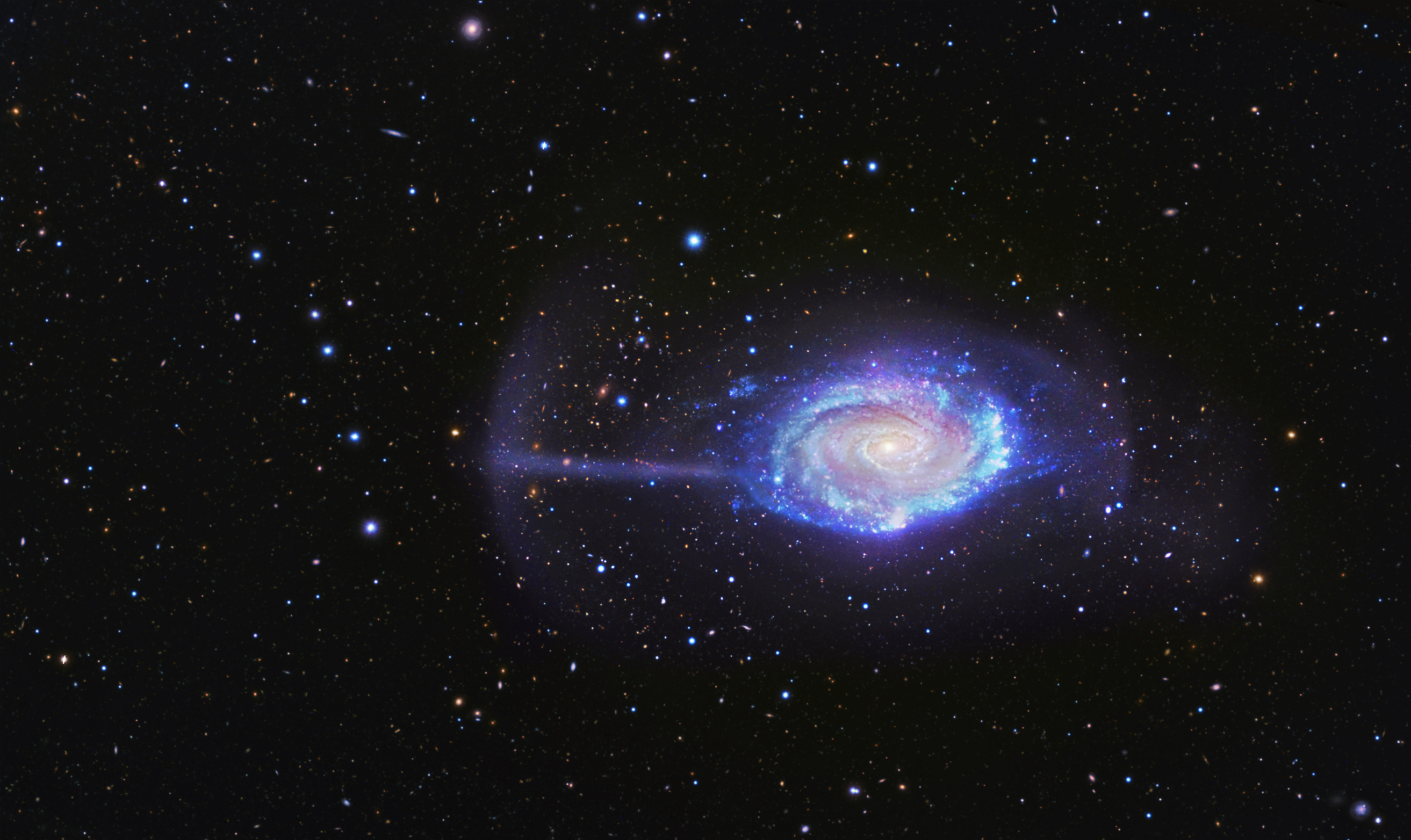Cosmic Crumbs Reveal Umbrella Galaxy's Eating Habits

Astronomers are studying the feeding habits of a cosmic cannibal to learn how galaxies grow.
If you point a telescope near the constellations of Leo and Virgo, you might be able to catch a glimpse of the galactic monster in question: the Umbrella Galaxy, formally called NGC 4651.
This spiral galaxy — a twin of the Milky Way — is eating a smaller galaxy, and it gets its whimsical nickname from the wispy "parasol" that surrounds it.
When scientists discovered this umbrella in the 1950s, they interpreted it as a dwarf galaxy companion to the bigger galaxy. But recent research has suggested this parasol might actually be made up of crumbs from a leftover meal.
Astronomers have shown that our own Milky Way has fattened up by acquiring stars from other, smaller galaxies. They've found streams of star crumbs emanating from the nearby Sagittarius dwarf galaxy, which is being engulfed by the Milky Way.
What's more, a study in 2010 that looked at eight spiral galaxies, including the Umbrella Galaxy, found that six of them had signs of mergers: shells, clouds and arcs of tidal debris.
Researchers led by Caroline Foster of the Australian Astronomical Observatory (AAO) have been studying the Umbrella Galaxy, and they learned that its distinctive arc is made up of the crumbs from a single dinner, rather than a series of meals.
Breaking space news, the latest updates on rocket launches, skywatching events and more!
"Through new techniques we have been able to measure the movements of the stars in the very distant, very faint, stellar stream in the Umbrella," Foster explained in a statement from the AAO. "This allows us to reconstruct the history of the system, which we couldn't before."
The astronomers used observations from the Subaru and Keck telescopes in Hawaii, and they tracked the movement of the stars in the stream by looking at globular clusters, planetary nebulae and patches of hydrogen gas in the galaxy. (Its distance from Earth is not well established, but the researchers in the study estimated that it is 62 million light-years away.)
The study, which has been accepted for publication in the Monthly Notices of the Royal Astronomical Society, is free to read online at the preprint service arxiv.
Follow Megan Gannon on Twitter and Google+. Follow us @Spacedotcom, Facebook or Google+. Originally published on Space.com.

Megan has been writing for Live Science and Space.com since 2012. Her interests range from archaeology to space exploration, and she has a bachelor's degree in English and art history from New York University. Megan spent two years as a reporter on the national desk at NewsCore. She has watched dinosaur auctions, witnessed rocket launches, licked ancient pottery sherds in Cyprus and flown in zero gravity on a Zero Gravity Corp. to follow students sparking weightless fires for science. Follow her on Twitter for her latest project.
